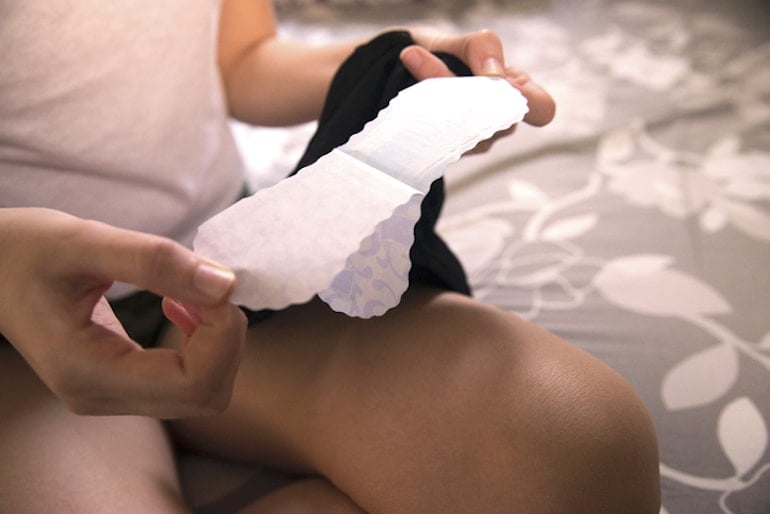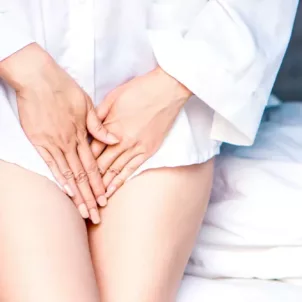Did you know that analyzing your period can provide insights into your overall health? Its regularity, volume, color, and cramping can all indicate numerous factors at hand. And while neither this article nor your period are intended to diagnose health issues, you can keep these four categories in mind to better understand what your period can tell you about your health.
Here’s what board-certified OB-GYN Lucky Sekhon, MD, has to say about each.


What Your Period Can Tell You About Your Health
1. Regularity
Generally speaking, menstrual cycles occur once a month and typically last anywhere from four to eight days. However, depending on a variety of factors, this regularity could vary. For starters, Dr. Sekhon says that shortened cycles or frequent periods occurring less than every 28 days (e.g., every 21 to 24 days) can be a sign of diminishing egg quality. “As women enter their 40s and beyond, their cycles will often initially shorten and become more frequent as their overall egg count declines more rapidly,” she explains. “This eventually gives way to more irregular, spaced-out cycles that eventually stop completely (menopause), which usually occurs in a woman’s fifth decade of life.” However, aging isn’t the only reason your period might be irregular. Dr. Sekhon says that polycystic ovary syndrome (PCOS) is another culprit. “PCOS is a condition that tends to manifest as irregular or long periods due to a lack of ovulation or irregular ovulation, the overdrive of androgens [male hormones], and problems with slow metabolism,” she explains. Next, various other considerations may also be at play. In addition to PCOS, Dr. Sekhon says that an underactive thyroid, excessive exercise, and extreme dieting are only a few additional factors that can impact your period’s regularity. With this in mind, be sure to pay attention to your next flow. Ask yourself: Is it four to eight days long? Has it been 28 days since your last period? If you have trouble keeping these measures in mind, there are apps to help keep track of your menstrual cycle. Keeping a log can be helpful in the long term. If a problem ever arises, you’ll have historical info to help inform it.
2. Volume
You know how you can choose from regular, super, and super-plus tampons? Or, if you prefer pads, light, regular, and heavy flow options? That’s because the volume of your period can change. If you experience particularly heavy bleeding, Dr. Sekhon says that it can be a sign of fibroids and/or blood clotting problems. “Fibroids are benign growths in the muscle of the uterus, particularly those that impact the inner lining of the uterus,” she explains. “Blood clotting problems can point to having a low platelet count.” Conversely, if you experience noticeably light bleeding, she says that scarring of the inner lining of the uterus could be to blame. “This is especially true in cases in which patients previously had normal bleeding with lighter periods or lack of periods after undergoing a surgical procedure on their uterus,” she notes. If you’re unsure just how voluminous your flow is, consider switching from tampons and pads to a menstrual cup. Not only are they a more eco-friendly option for period care, but they’re also better to measure your flow’s volume. Lastly, Dr. Sekhon says that if your period seems diluted or watery, it could signify a low red blood cell count and/or iron deficiency.3. Color
You might think that blood is blood. But when it comes to your period, the color can say a lot. So what does your period color mean? “At the start of your period, it’s normal to have bright red bleeding,” Dr. Sekhon says. “[But] towards the tail end of your period, as bleeding tapers off, it can become darker brown as old blood becomes oxidized.” Next, she continues that pinkish-red bleeding can be a sign of low estrogen levels, “such as the bleeding experienced by postmenopausal women with thin, fragile uterine lining or polyps in their uterus.”
4. Intense cramping
Last but not least, there’s cramping. While we can pretty much all attest to how uncomfortable cramping can be, excessive soreness can be a sign of more. “Cramping can be a sign of endometriosis. This is a condition in which the lining of the uterus is found outside of the uterus, especially the pelvic cavity and ovaries,” Dr. Sekhon explains. “Every month, when a woman’s uterine lining sheds and causes bleeding, these endometriosis ‘implants’ in other locations also break down and [can] cause inflammation, scarring, and painful periods.”Final Thoughts
So that’s that. Once you start noticing tell-tale signs and signals, you’ll begin to better understand what your period says about your health. Last but not least, if you notice any period irregularities related to any of these categories, consult a doctor to be safe.More like this









